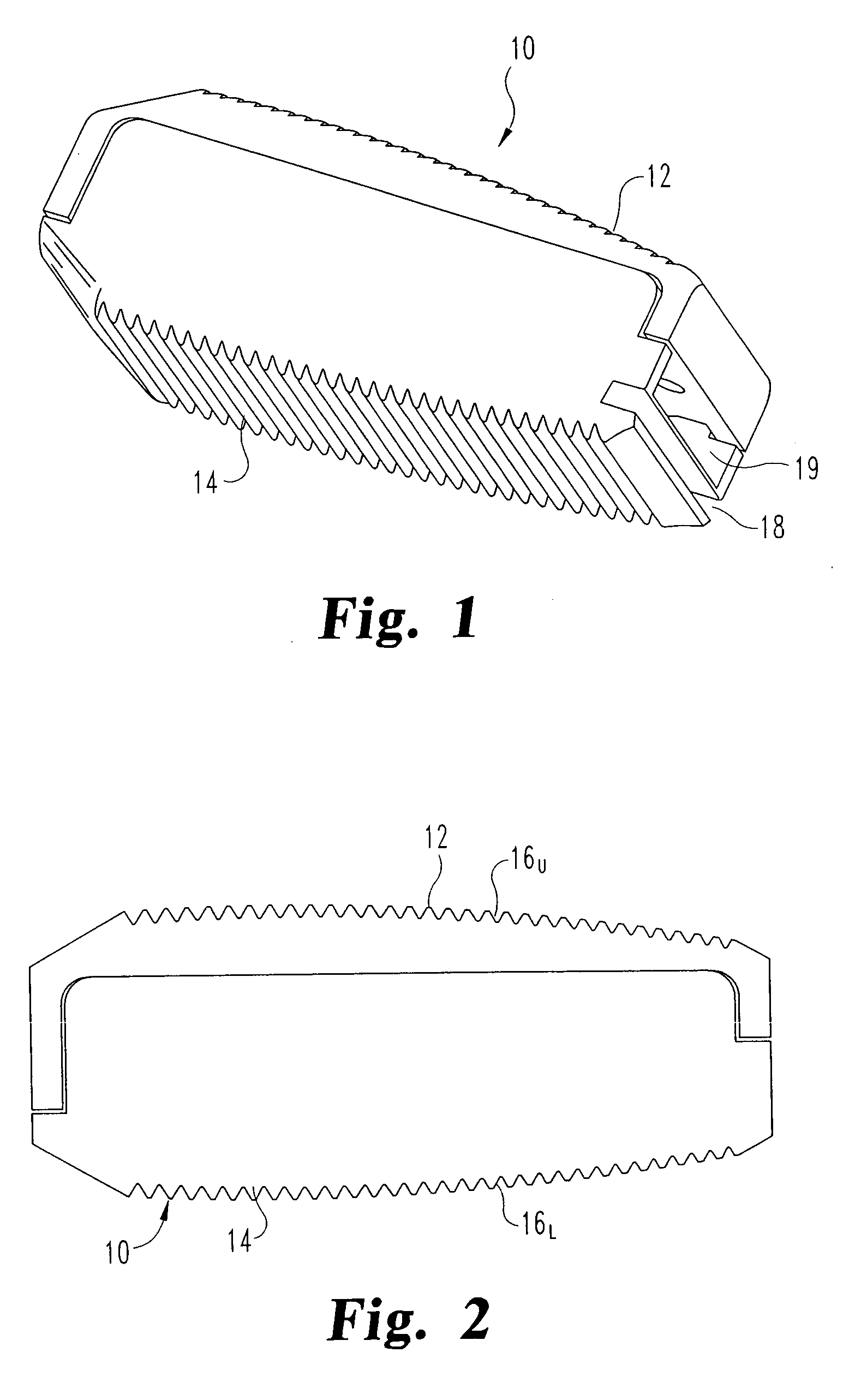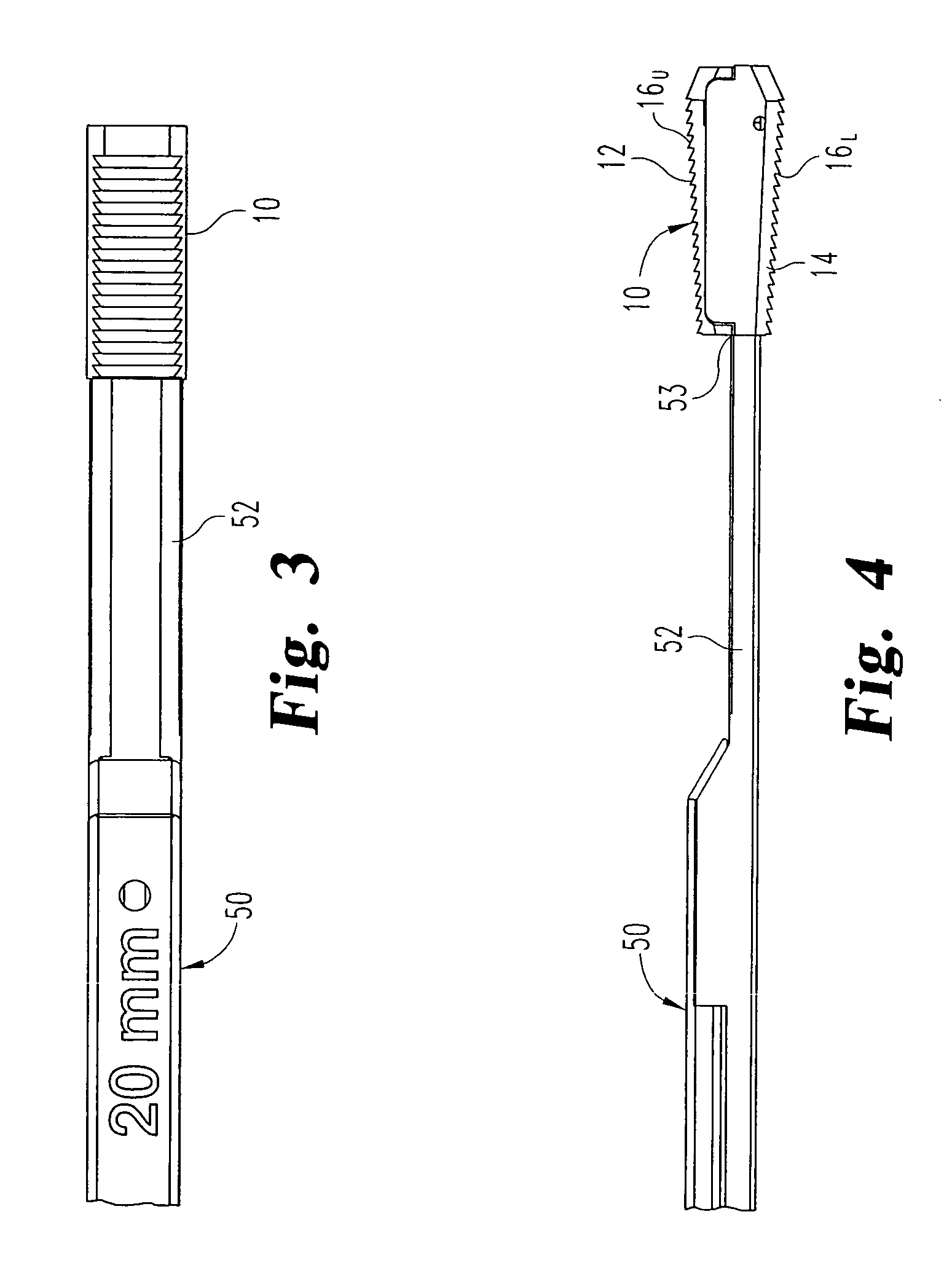Expandable interbody fusion device
a fusion device and expandable technology, applied in the field of expandable interbody fusion devices, can solve the problems of inconvenient operation, high cost, and long surgical procedures to implant rods or plates to stabilize the level during fusion, and achieve the effect of easy control
- Summary
- Abstract
- Description
- Claims
- Application Information
AI Technical Summary
Benefits of technology
Problems solved by technology
Method used
Image
Examples
Embodiment Construction
[0054] For the purposes of promoting an understanding of the principles of the invention, reference will now be made to the embodiments illustrated in the drawings and described in the following written specification. It is understood that no limitation to the scope of the invention is thereby intended. It is further understood that the present invention includes any alterations and modifications to the illustrated embodiments and includes further applications of the principles of the invention as would normally occur to one skilled in the art to which this invention pertains.
[0055] In accordance with one embodiment of the invention, an interbody fusion device (IBFD) 10 includes a superior endplate 12 and an inferior endplate 14 that define a wafer cavity 19, as shown in FIGS. 1-2. The superior and inferior surfaces of the endplates define engagement ribs 16U and 16L that are configured to engage or grip the vertebral endplates of opposed vertebrae in a spine. Preferably, the ribs ...
PUM
 Login to View More
Login to View More Abstract
Description
Claims
Application Information
 Login to View More
Login to View More - R&D
- Intellectual Property
- Life Sciences
- Materials
- Tech Scout
- Unparalleled Data Quality
- Higher Quality Content
- 60% Fewer Hallucinations
Browse by: Latest US Patents, China's latest patents, Technical Efficacy Thesaurus, Application Domain, Technology Topic, Popular Technical Reports.
© 2025 PatSnap. All rights reserved.Legal|Privacy policy|Modern Slavery Act Transparency Statement|Sitemap|About US| Contact US: help@patsnap.com



